Kiwi are the most translocated bird species in Aotearoa New Zealand and the number of new projects and released birds are steadily increasing, according to a recent report in the New Zealand Journal of Ecology.
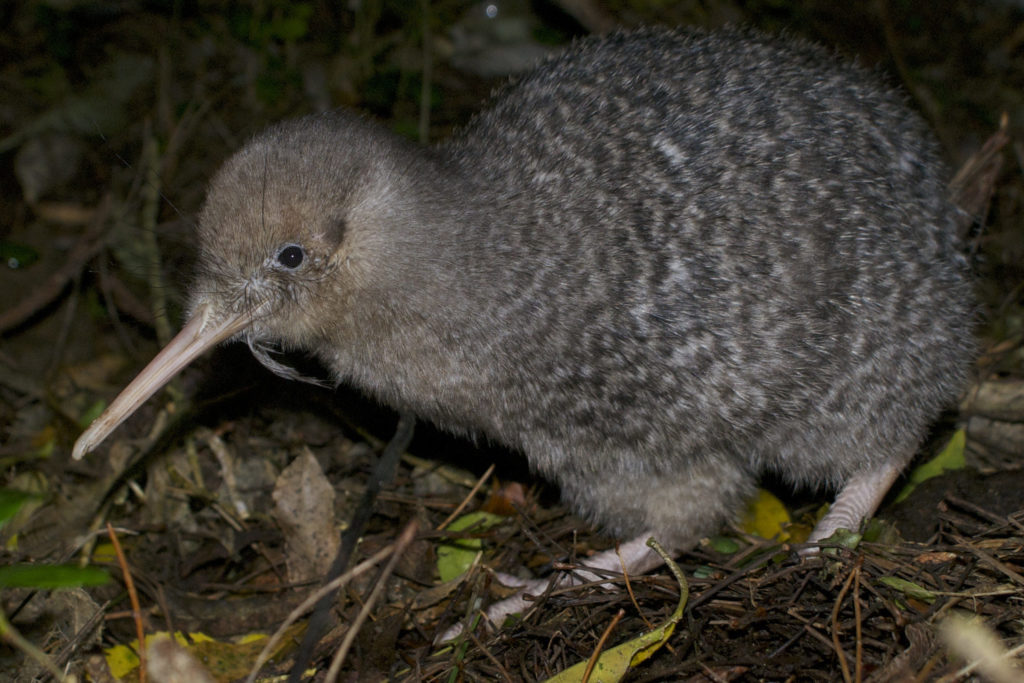
We’ve been moving our kiwi around for over 100 years but could we be doing it better?
Around the late 1800s/early 1900s, kiwi were moved to try and save populations from recently arrived mammal predators. Later in the 20th Century more kiwi were moved, often because their home habitat was about to be lost to logging. We’re still shifting kiwi to try and save them from mammal predators and habitat loss, but little has been publicly reported on the success of the many projects over the longer term.
Early transfers between mainland sites were mostly unsuccessful as most or all birds died or dispersed, but many early translocated island populations have persisted until the present.
“Advances in pest eradications on islands, landscape-scale predator control and fenced sanctuaries have allowed successful releases of kiwi and other wildlife valued by communities throughout New Zealand. Those advances in predator control techniques, mainly trapping and poisoning, have led to the creation of larger ecosystem restoration areas, which also enabled effective management of remnant kiwi populations in situ.”
Up until 1995, kiwi for translocation to new areas were caught from existing wild populations. But in 1995 a new method of intensive management of kiwi, Operation Nest Egg, was developed.
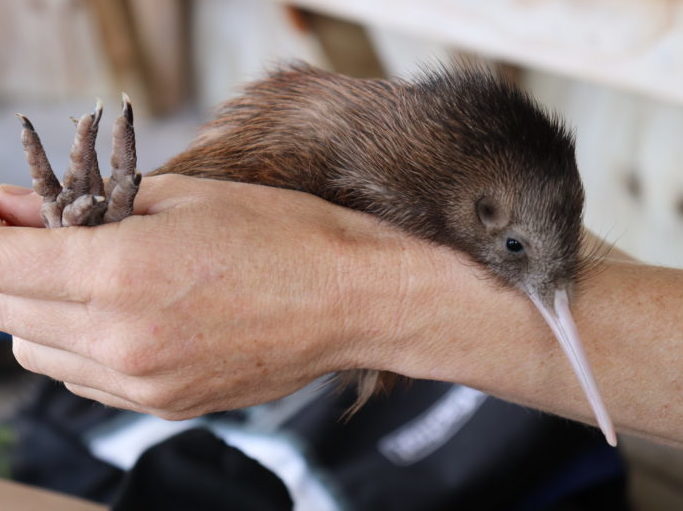
“Operation Nest Egg (ONE) involves removing kiwi eggs from the wild, incubating and hatching chicks in a captive facility, and keeping them in a predator-free environment (crèche) until they reach a safe size (typically 0.8–1.2 kg) to fend off stoats, before releasing them back into the wild. This method has been widely used for several kiwi species. Initial successes of these developments and increased involvement of community groups, iwi and hapū, resulted in a boom of kiwi translocations over the last two decades.”
Translocation is no longer just about grabbing wild kiwi from the jaws of predators or out of the path of logging trucks.
“The objectives vary: creating secure populations and establishing kōhanga sites/source populations to supply wild kiwi for releases elsewhere, meta-population management, ecosystem restoration projects, and mitigation transfers.”
Kiwi population management sounds like it’s got a lot more sophisticated recently – but is it working? According to the article’s authors, there are some things we could be doing better.
“There is a lack of information on kiwi translocations and their outcomes, which makes it difficult to assess overall translocation effectiveness, address possible issues, improve translocations as a tool, and identify the role that translocations play in kiwi recovery management. Currently, there is no database of all kiwi translocations, and the existing registers lack sufficient detail to fully document the scope of translocations and objectives for which they were carried out. Outcomes of translocations remain mostly unpublished and are often unreported, especially for those that failed or had uncertain outcomes.”
The authors argue that a thorough assessment of translocations is critical for the refinement of this management tool to maximise the probability of success.
“To qualify as a ‘conservation translocation’, the aim of the movement should be to produce a measurable conservation benefit at a population, species, or ecosystem level. Other types of translocations are carried out solely to benefit the translocated individuals, such as mitigation translocations and rehabilitation releases, or for aesthetic reasons/enjoyment by landowners. In recent decades, translocations have been also carried out for conservation advocacy and community interest.”
The authors separate conservation translocations into ‘conservation introductions’, releases of species or particular taxa outside their historical range, and ‘population restorations’, releases within their range: an area in which the taxon naturally occurs or was known to occur in the past.
“Additionally, we discern between two types of population restorations. First, a ‘reintroduction’ happens where a species has become locally extinct. Second, a ‘reinforcement’ (alternatively ‘supplementation’) happens when a population of the species is still present at the release site.”
Translocations can consist of a single release or can take place over several years and consist of multiple releases until the desired number of translocated animals is achieved. The authors assessed 102 kiwi translocation projects that occurred between 1863 and 2018.
“Historical translocations were typically poorly documented, or the documents were difficult to locate and access. For that reason, we generally focused on the 76 translocations occurring in the last four decades (1979–2018), with an emphasis on the 60 translocations from the last two decades (1999–2018), for which post-release monitoring data and supplementary information were more available.”
Operation Nest Egg kiwi were also included in the analysis.
“Specifically, we included all translocations of wild birds, birds from captive facilities, and intended permanent releases of juveniles and subadults from the ONE programme, provided that these birds were released at a location different to their source site. In contrast, temporary translocations of ONE birds to a crèche site, ONE releases to the original source population, transfers to captivity, and other releases not intended to found a permanent kiwi population were excluded from our review.”
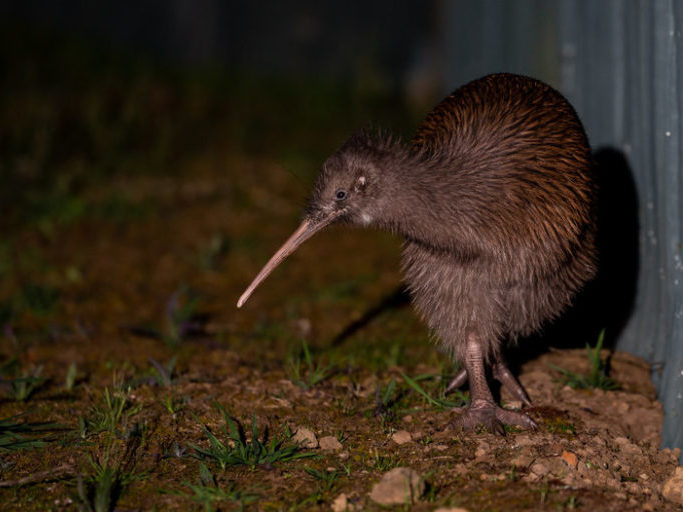
So how do you know if a translocation is successful?
“Evaluating translocation outcome is challenging because there is no scientific consensus on what constitutes translocation success. Moreover, most reported outcome evaluations focus on the establishment phase of a translocated population. However, even though successful establishment and growth are necessary for a population to be viable in the long-term, they do not predict the ultimate translocation outcome. Therefore, to accurately evaluate translocations, we need to distinguish between three post-release phases: population establishment, growth, and self-regulation.”
Success can take time – a lot of time.
“Several decades may be required before a translocated population reaches the regulation phase and so be considered as successfully persisting for the long term, over multiple generations. All kiwi species are long-lived with a possible life expectancy exceeding 50 years for most taxa. Kiwi are irregular breeders and require 1–5 years before they reach sexual maturity, with variation among the taxa. All kiwi are sexually dimorphic, which allows for relatively simple sexing of adults in the field, but it is not possible to reliably assign age once mature. These characteristics make it difficult for long-term monitoring of translocated populations consisting of unmarked individuals.”
The main objective of most translocations is to establish or restore a population with a high probability of persistence. There needs to be sustained population growth and enough founders to minimise the loss of genetic diversity.
“To achieve sufficient retention of genetic diversity, at least 40 unrelated individuals of brown kiwi need to be released initially. This number of starters (initially released birds) is expected to maximise the probability of persistence and avoid genetic deterioration of introduced populations. We set the minimum assessment timeframe of 15 years to allow a sufficient period for the population to start growing following the post-release effects and acclimation period of suppressed growth rate.
The 15-year time period should allow enough time for the released juveniles or subadults of various kiwi species to mature and breed, as well as for their offspring to start breeding.
“This timeframe provides a reasonable indicator of success in the population growth phase without requiring data across the decades that may be necessary to reach the regulation phase at all sites.”
The researchers divided translocation outcomes of introductions and reintroduction projects into five categories:
Likely successful: a successfully established population growing at least 2% on average per annum (finite rate of increase) over a minimum of 15 years, after 40+ individuals were released. Also, self-regulating populations of 100+ pairs founded by 40+ individuals. Further immigrants likely need to be periodically added or immigration facilitated for maintaining genetic diversity.
Requiring further management: an established population 15+ years after the latest release with less than 40 released birds in total, which will likely require more major releases or ongoing genetic management. Also, populations below the 2% average annual growth rate and kōhanga sites, more than 15 years since the latest release.
In progress: a population less than 15 years since 40+ birds were released or a population with less than 40 birds released within the last 15 years.
Unsuccessful: a population showing signs of decline below 50% of the initially released birds at 15+ years post the latest release, or in cases where released birds were removed from the project area.
Not assessed: a reinforcement translocation or an introduced hybrid population of individuals originating from different kiwi species.
While it was not always possible to establish the numbers of released birds, particularly for the historical translocations, the authors determined that at least 2572 kiwi were translocated in the 102 identified translocation projects that occurred between 1863 and 2018. After the initial wave of translocations in Fiordland at the turn of the 19th century and releases to Kapiti and Te Hauturu-o-Toi/Little Barrier islands in the early 20th century, there was little translocation activity until the 1970s.
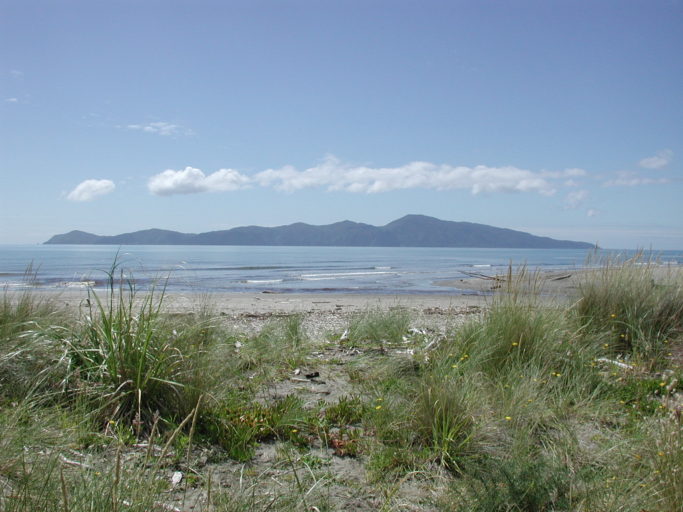
“From then on, the number of new projects has generally been increasing every decade. The highest increase of translocation events and the number of translocated birds occurred during the last two decades, with 76% of all translocated kiwi released in the last 15 years (2004–2018).”
“In the period 1979–2018, for which we have the most information, 76 translocation projects were carried out. These projects took place over five years on average (range: 1–17 years), and in many cases, releases are likely to continue. For the same period, we recorded at least 817 separate release events (releases on consecutive days were counted as a single event).”
The median number of released birds for introduction and reintroduction projects was 29 (with a range from 2–169), so below the ideal minimum of 40 birds.
“In this period, most translocation projects (55%) were of brown kiwi, followed by little spotted kiwi (17%), tokoeka (14%), great spotted kiwi (5%), rowi (5%), and hybrids of rowi and little spotted kiwi (3%). Since the 1860s, most of the release sites (63%) were in the North Island, or the surrounding offshore islands. Only 33% and 4% of all translocations were to South and Stewart Island sites, respectively.”
“Most kiwi translocations (58%) were introductions to places where the kiwi taxa were not known to occur previously, such as on offshore islands, or to areas on the mainland outside of their historical range. Reintroductions (within the historical range) accounted for only 19% of all translocation projects. Finally, 24% of all translocations were reinforcements of either naturally existing populations, or, in four cases, populations that were previously established by earlier introductions.”
Before 1995, only wild-caught kiwi were translocated.
“With the introduction of the ONE programme in 1995 and releases of brown kiwi from captivity, the number of translocations relying only on wild-caught animals has declined markedly. Only 35% of translocations comprised exclusively of wild-caught animals in the last two decades. The share of translocation projects releasing exclusively ONE sourced birds in the same period increased to 25%, and only 5% (three minor reinforcement translocations) comprised birds solely from captivity. The remaining 35% of translocation projects consisted of a mix of birds sourced from a combination of wild, ONE, or captive populations. The shift towards ONE releases is most apparent for brown kiwi, rowi, and Haast tokoeka (translocations comprised exclusively of ONE birds).”
Translocations of little spotted kiwi, Fiordland tokoeka, and Rakiura tokoeka were all sourced solely from wild-caught birds while great spotted kiwi translocations were predominantly sourced from wild-caught birds.
“Most kiwi translocation projects were to islands (55%), particularly during the early translocation period. There were no known cases of introductions or reintroductions to the mainland until the 1970s. Overall, 36% of translocations were to open mainland sites and the other 9% to ring- or peninsula-fenced sanctuaries. Translocations to the mainland became more frequent after 2000. Between 1999–2018, the share of translocations to islands dropped to 33%, while the share of translocations to mainland sites and fenced sanctuaries increased to 52% and 15%, respectively.”
In total, 49% of release sites were considered free from the kiwi’s main predators: stoats, ferrets, dogs and cats at the time of the releases, while 18% had one or more of these predators present and no predator control, including sites with cats as the only main kiwi predator.
“The remaining 33% of sites had some level of sustained predator control management. The first translocation projects with ongoing predator control appeared only in the last two decades. Before 1999, 43% of translocations were to sites with no predator control (the last of these were in the 1980s), while 57% of translocations were to presumed predator-free sites, although anecdotal evidence suggests that some of them were invaded by predators soon after the kiwi releases. Between 1999–2018, 43% of translocations (n = 60) were to predator-free sites, and 57% had some kind of predator control; 17% relied on trapping, 35% on a combination of trapping and poisoning (mostly by 1080/ sodium fluoroacetate), and 5% relied solely on aerial poisoning as a means of control.”
Specific kiwi translocation projects are rarely reported in the scientific literature, say the authors.
“Out of 76 translocations between 1979–2018, reports from only nine projects (12%) appear in scientific journals: four little spotted kiwi translocations, four brown kiwi project, and one great spotted kiwi project. Information on a further 47 projects (62%) exists in reports, some published and publicly available, mainly through the DOC website, but most project reports remain solely as internal documents. For 20 projects (26%), reports either do not exist or were unavailable. Information about these projects is usually kept only as internal records.”
All of which makes assessing outcomes a bit of a challenge.
“Out of the 75 assessed introductions or reintroductions, only 19 are known to have released at least 40 birds by 2018. However, only four projects had released at least 40 birds by 2003, so that at least 15 years had passed before the assessment date. Three of these failed and only one site, Zealandia, had a population increasing at a rate of more than 2% annually on average and therefore can be considered as a likely successful introduction/reintroduction as of 2018.”
When the authors reduced the assessment timeframe to ten years, they found three more sites received 40+ birds from 2004 to 2008. However, only one, Tāwharanui, could be considered likely successful due to its sustained population growth at this stage.
“We classified 12 established translocated populations with less than 40 released birds as requiring further management. Among these projects is little spotted kiwi on Kapiti Island, where it is unlikely that more birds will be added as there is no known wild population available for harvest.”
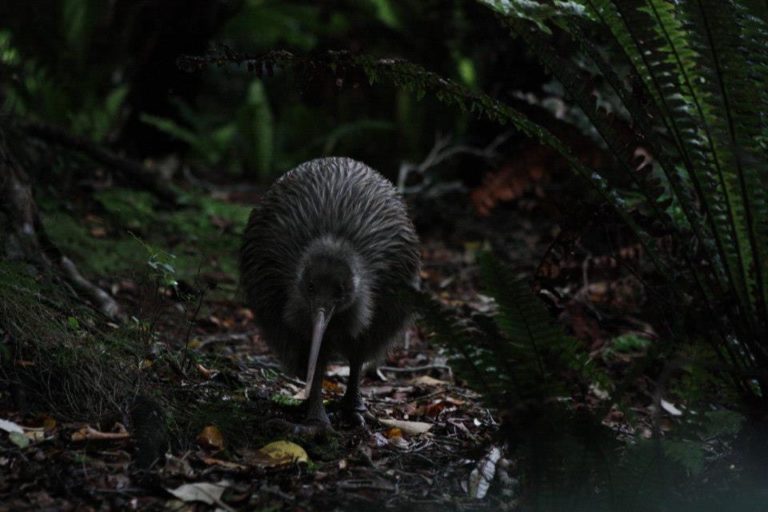
A greater number of projects were categorised as unsuccessful.
“Failed introduction or reintroduction projects, in which birds were subsequently removed, or where the population did not persist, were categorised as unsuccessful. In these instances, some individuals may still survive in the project area, but the population is considered functionally extinct. One third of the assessed translocations were unsuccessful projects (24 out of 75; 32%), but only three of these occurred in the last two decades. These recent unsuccessful attempts were projects where the translocated birds were removed following fatalities due to either starvation or predator incursion. The remaining 21 unsuccessful translocations were mostly early island releases from the late 19th/early 20th century or mitigation/emergency translocations from the 1970s and 1980s.”
Failure in the first group were probably caused by a combination of small founder populations, predator invasions, and insufficient habitat size while failed translocations in the 1970s and 1980s to unfenced mainland sites suffered mainly from the lack of predator control, dispersal, and/or insufficient initial population size.
To better understand both the successes and failures, better monitoring is needed.
“A lack of detailed post-release monitoring data severely limited the evaluation of post-translocation survival and dispersal. No such data were collected, or data were unavailable, for kiwi translocations prior to 1979. Between 1979–2018, post-translocation monitoring information was available for 75% of all translocations. Fewer projects had available information about survival longer than one-year post-release. Specifically, survival information was available for at least a subset of released birds for one full year (70% of projects), three years (46%), and five years (30%) post-release.”
Misadventure, such as drowning and falls, was recorded as a cause of kiwi death at 40% of the projects in all site types. But rates of predation varied widely between unfenced mainland sites on the one hand, and islands and fenced sanctuaries on the other, the authors reported.
“Sixty-five per cent of mainland projects (15 out of 23 projects with information on mortality) recorded predation of released kiwi. The birds were mainly depredated by mustelids – predominantly stoats, but also ferrets, which were confirmed at 30% (7) of mainland sites. Predation by dogs was also an issue at 30% (7) of sites.”
Island sites were a safer bet for kiwi, but were not without their own predator threats.
“In contrast, no island translocations reported predation of released kiwi between 1999–2018. However, stoat incursions occur repeatedly on islands near the mainland, such as in the case of Pomona Island at Lake Manapouri. In one case in 1982, previously released little spotted kiwi were removed from Maud Island to avert predation by newly-invading stoats. The situation was similar at fenced sanctuaries. Only one fenced sanctuary, which did not eradicate stoats, reported stoat predation. Two other fenced sanctuaries reported rare stoat incursions but no associated kiwi mortality.”
Dispersal beyond the project area was a significant issue influencing population establishment, particularly at the unfenced mainland sites.
“Dispersal from protected project areas appears to be a frequent issue at unfenced mainland sites. Between 1999–2018, 64% of unfenced mainland projects (n = 22) with available information reported dispersal of at least some individuals to outside the project area within the first-year post-release.”
The size of the release area seems to have been a factor. Unsurprisingly, big is better.
“Sites with an area less than 3000 hectares (median area of mainland sites) had one dispersed bird per three known surviving birds by the end of the first-year post-release. In contrast, sites of 3000+ hectares had one dispersed bird per 24 known surviving birds.”
Some kiwi were persistent runaways.
“At most mainland projects with reported post-release dispersal (at least eight out of 11), some or all wandering kiwi were brought back to the project area by managers. Several of the dispersing birds were brought back repeatedly.”
There was little information about breeding success of released kiwi.
“Between 1999–2018, only 33% of all translocation projects (n = 60) reported breeding of the released birds within five years post-release. This information is mostly limited to signs of breeding attempts or successful hatching of chicks, and information about offspring recruitment into the breeding population is usually unavailable.”
The authors have identified factors affecting the survival of released birds, which contribute to the translocation outcome. They note that the kiwi taxa that receive relatively little management, including only a few or no translocations, have moved to more threatened conservation status in recent years, whereas those with more management, including more translocations, generally improved their conservation status.
But is 40 founding birds enough for long-term success?
“The current official guidance for kiwi introductions and reintroductions is to release 40 individuals to establish a founding population. However, there are several other requirements that need to be met to maintain the desired level of genetic diversity, including 90% post-release survival, no dispersal, a high proportion of breeders among released individuals (> 90%), a predator-free environment, and a sufficient carrying capacity of the project area to allow for population growth. Furthermore, given the lower survival rates of translocated juvenile and subadult kiwi, more young birds should be released to retain the same level of allelic diversity within a new population than within a population established by releasing adults alone.”
Currently, the reality of translocation often diverges from these requirements.
“At three predator-free sites, where populations were established by wild-caught and mainly adult little spotted kiwi, the estimated proportion of effective founders (released birds that successfully produced offspring) within the total numbers of translocated birds was highly variable (40–81%). Such low proportions of successful breeders suggest a significant loss of the source population’s genetic diversity within the new populations, which is likely common among translocations of other kiwi taxa as well. Similarly, given the lower mean survival times at sites with predator control and where populations were established by ONE birds, we could infer that the number of released birds needs to be much higher than the suggested 40 birds to maintain the desired level of genetic diversity.”
Managers need to account for the loss of genetic diversity caused by the differences in survival rates, causes of mortality, or the carrying capacity, and the boundary type of the project area, write the authors.
“At mainland unfenced sites, sufficient space for post-release dispersal or natural dispersal of future juveniles and subadults needs to be available to reduce losses of released birds and their offspring. If no additional habitat is available to enlarge the project area, managers may need to follow up with periodic releases to compensate for the loss of dispersed individuals and facilitate necessary gene flow between populations.”
Habitat quality and predator status are crucial factors.
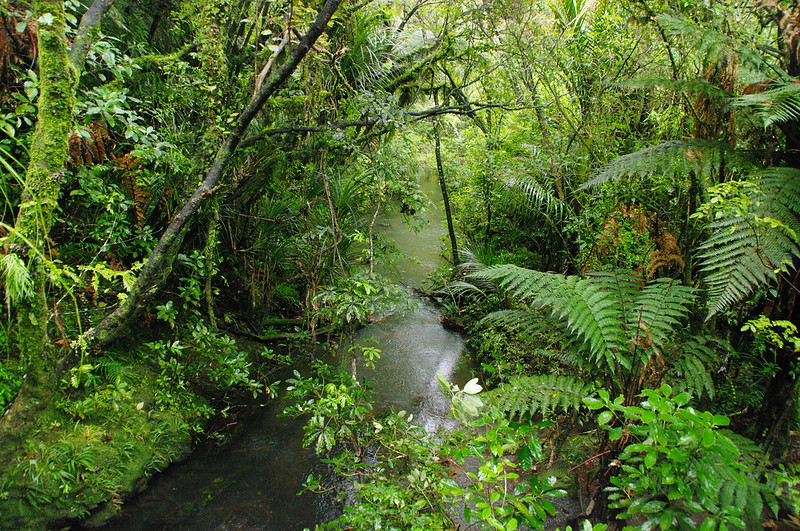
“Small, unfenced areas may not provide sufficient habitat quality for population persistence even with intensive predator management. Extensive buffer zones with predator control around unfenced project sites may reduce predator incursions and associated kiwi mortality. Notably, control measures for wide-ranging ferrets in the areas surrounding project sites may be necessary to reduce deaths within translocated populations.”
Finally the authors emphasise the importance of monitoring for ongoing success and improvement.
Translocated populations must be adequately monitored, and the translocation outcomes reported. Post-release effects play an important role in population establishment and should be addressed by managers to reduce mortality and dispersal, particularly of ONE birds. Appropriate release strategies, such as releasing ONE birds in larger groups and outside of winter and autumn months, may significantly increase survival, as demonstrated in rowi.”
“Modelling of survival times suggests that releases of ONE birds are best suited for predator-free sites to maximise chances of these birds to settle, mature, and breed successfully. Sufficiently long and standardised post-release monitoring will facilitate addressing possible issues, inform subsequent adaptive management, and allow for planning of additional releases, if needed, to supplement the founder population. Reporting of demographic data from monitoring, together with details on habitat variables and applied management tools, is essential to further increase the effectiveness of future translocations.”

